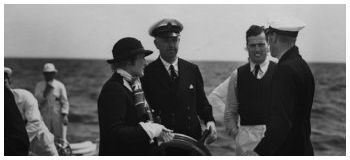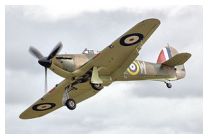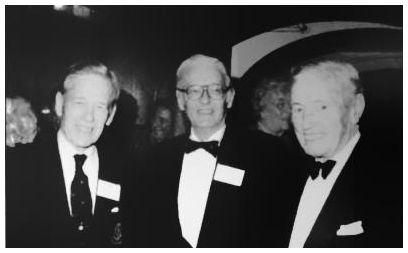Yves GARY Hits: 4565
Category: SKIPPERS & CREWS
 Frank John MURDOCH is born February 21, 1904 in Antwerp,Belgium, son of Dan Murdoch and Alice Murdoch (born Jansen), married to Phyllis Murdoch (born Strutt), he had two boys Anthony John and Colin Peter. He died June 13, 1996 in Nyon, Switzerland.
Frank John MURDOCH is born February 21, 1904 in Antwerp,Belgium, son of Dan Murdoch and Alice Murdoch (born Jansen), married to Phyllis Murdoch (born Strutt), he had two boys Anthony John and Colin Peter. He died June 13, 1996 in Nyon, Switzerland.
His involvement with boat building was no surprise. The Murdoch family had been engaged in it since 1867, and he had cruised and raced ...
... successfully in both 8-meter and 6-meter class sailboats thoughout his youth. After serving an apprenticeship, he assumed the position of assistant manager of an Antwerp, Belgium, company that built boat interiors for the Murdoch boat yard. He later studied engineering at University College, London's most prestigious engineering school.
 Frank Murdoch brought cutting-edge technology to the America's Cup, and may have saved England in the process.
Frank Murdoch brought cutting-edge technology to the America's Cup, and may have saved England in the process.
In late 1936, while in Germany to oversee the testing of two diesel engines for Sir T.O.M. Sopwith's new America's Cup tender, Philante, Murdoch observed vast numbers of U-boat engines, fighter planes and bombers in production. Returning to England with this information, he and Sopwith soon stepped up their own aircraft production in preparation for the inevitable. As chief production engineer for for Hawker Engineering Co. Ltd., an outgrowth of the Sopwith Airplane Co., Murdoch was in charge of a force of 800 men, who built more than 200 Hawker Hurricanes from 1937 to 1941. These were the airplanes that won the Battle of Britain.
 Prior to that patriotic effort, it was Murdoch's genius that helped make Sopwith's first America's Cup challenger, Endeavour, the technological marvel that nearly unseated the America's Cup from New York Yacht Club. Three years after their first meeting, while racing 12-meter class sailboats off the south coast of England, Sopwith had engaged Murdoch to overee the work of boat builder Camper & Nicholson on the mast and rigging for Sopwith's new J-class sloop.
Prior to that patriotic effort, it was Murdoch's genius that helped make Sopwith's first America's Cup challenger, Endeavour, the technological marvel that nearly unseated the America's Cup from New York Yacht Club. Three years after their first meeting, while racing 12-meter class sailboats off the south coast of England, Sopwith had engaged Murdoch to overee the work of boat builder Camper & Nicholson on the mast and rigging for Sopwith's new J-class sloop.
Murdoch's engineering experience and influence transformed the yacht into a technological wonder. His plans for the rigging and the use of strain guages were decidedly innovative. A unique two-man winch that operated like a rowing machine and the first on-board wind direction indicators were also Murcdoch innovations. In the 1934 races, he also lent his sailing expertise to Endeavour as sail trimmer and general overseer.
In the 1934 races, he also lent his sailing expertise to Endeavour as sail trimmer and general overseer.
In 1936, despite the heavy workload at Hawker in preparation for war with Germany, he found time to design the rig for Sopwith's Endeavour II. Following the 1937 America's Cup races, however, Murdoch's sailing diversions came to an end as Hawker geared up for war.
After the war, his yachting life resumed with the Camper & Nicholson-designed 6-meter Lalage. He raced in England, Belgium, Switzerland and the United States, and represented Great Britain in the 1952 Helsinki Olympic Games. As chairman of the IYRU Class Selection Committee, he played a part in the choice of the Soling as the new Olympic keelboat class to replace the Dragon.
Ironically, in 1984, at the age of 80, Murdoch once again was involved with Endeavour. He became the consulting engineer for Elizabeth Meyer's restoration of the famous J-boat. His patience, knowledge, logic and discipline played a vital role in the effort to restore the rotting sailboat to her original beauty.

 USEFUL LINKS
USEFUL LINKS
- Frank J. Murdoch - AmericaOne
- Frank J. Murdoch, 1996 Inductee - Herreshoff Marine Museum & America's Cup Hall of Fame
- Frank John Murdoch (1904 - d.) - Genealogy
